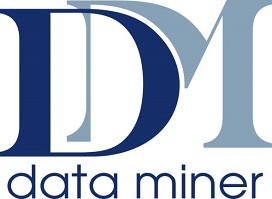About this course
This four-day course is a mix of in-depth instructor led training and hands-on labs where you will learn how to administer System Center Operations Manager 2016. This course will provide delegates with an understanding of the Operations Manager 2016 Architecture, features and how to administer and maintain Operations Manager 2016.
Please Note: The differences between System Center Operations Manager 2016 and System Center Operations Manager 2012R2 are small. Therefore this course will also be suitable for people wishing to learn about System Center Operations Manager 2012R2
This class begins with an introduction to Operations Manager 2016 followed by a detailed architectural discussion that explains how to design your Operations Manager 2016 environment. You will then perform an advanced installation of Operations Manager 2016 and explore agent deployment. Once the setup is complete you will perform other recommended post installation configurations. From here, we turn our attention to overrides, diagnostics and recoveries, notification configuration, and the Operations Manager Shell.
Next we spend some time on the basics and best practices around alert tuning which is the process that helps to reduce the alert ‘noise’ within your organization. Next, we look at how to address a number of common monitoring requests within the Operations Console to allow you to confidently say ‘Sure, we can monitor that.’ and then go off and create the required rules or monitors. Finally, we wrap up the class with a look at some of the more common 3rd party add-ons to provide you with an understanding of how to integrate SCOM into your environment as opposed to having it operate in isolation.
Session 1: Overview of System Center Operations Manager 2016
After completing this session delegates will be able to:
- Describe the features in System Center Operations Manager 2016
- Navigate through the Operations Console
Session 2: Operations Manager 2016 Architecture and Installation
After completing this session delegates will be able to:
- Describe the core server roles in Operations Manager 2016
- Design a basic and advanced architecture
- Understand the hardware requirements and physical and virtual server options
- Install Operations Manager 2016
- Install an addition Management Server
- Import Management Packs
- Understand and perform recommended post installation tasks
- Explain and define the configuration of global settings
Session 3: Installing the Gateway Server Role
After completing this session delegates will be able to:
- Explain the Public Key Infrastructure (PKI) prerequisites
- Describe the Gateway server role
- Install and Configure a Gateway server
Session 4: Configuring Operations Manager Security
After completing this session delegates will:
- Understand role based security for both Windows and Cross-platform monitoring
- Be able to create a new user role and restrict the view in the Operations Console to specific groups
- Understand the minimum requirements for the different service accounts and the action account
- Create and configure RunAs accounts and Run As Profiles for cross platform agent discovery
Session 5: Agent Deployment and Configuration
After completing this session delegates will be able to:
- Deploy an agent to a Windows server
- Deploy an agent to a non-Windows server
- Discover and monitor network devices
Session 6: Alert Notification and Alert Processing
After completing this session delegates will be able to:
- Create custom Alert resolution states
- Understand Severity and Priority
- Extend Alert properties
- Investigate Alerts
- Define notification recipients
- Define notification subscriptions
- Subscribe to a notification from an alert
- Investigate how management packs are tuned
- Create and deploy Overrides
- Review best practices for Discoveries, Rules, Monitors and Overrides
Session 8: Custom Monitoring and Distributed Applications
After completing this session delegates will be able to:
- Describe the components included in a Management Pack
- Describe and use the Management Pack Templates
- Understand overrides, diagnostics and recoveries
- Understand the health model
- Describe the difference between rules and monitors
- Understand targeting best practices
- Review Synthetic Transaction’s and Distributed Applications models
Session 9: Tuning the Core Microsoft Management Packs
After completing this session delegates will be able to:
- Perform basic tuning of the core Microsoft Management Packs such as Windows Server, Active Directory, MS SQL
Session 10: Application Performance Monitoring
After completing this session delegates will be able to:
- Configure performance and exception monitoring (server and client-side)
- Limit visibility of personally identifiable customer data (PII)
- Configure tagging and aliasing
- Use APM reports to identify root cause of exception and performance issues
Session 11: Network Monitoring in Operations Manager 2016
After completing this session delegates will be able to:
- Configure explicit, recursive and schedule network discovery
- Enable deep monitoring for critical ports and devices
- Use network visualizations to pinpoint root cause
Session 12: Working in the Operations Manager Shell
After completing this session delegates will be able to:
- Run some basic Operations Manager Command Shell commands
- Extract information from the Comment Shell
- Perform bulk administration tasks, such as group maintenance mode
Session 13: Reporting & Dashboards
After completing this session delegates will be able to:
- Run the reports in the Microsoft Generic Report Library
- Create a custom dashboard to present the data that is of interest
MCITP: Server Administrator on Windows Server 2008, or equivalent knowledge.
| Pradžios data | Trukmė, d. | Kurso pavadinimas | Kaina, € | Statusas |
| Užklausti | 5 | 10748: Planning and Deploying System Center 2012 Configuration Manager | 1500 | |
| Užklausti | 5 | 20696: Administering System Center Configuration Manager and Intune | 1500 | |
| Užklausti | 5 | Administering System Center Configuration Manager | 1500 | Organizuojamas |
| Užklausti | 4 | Administering Microsoft System Center 2016 Operations Manager | 1400 | Organizuojamas |

